Iron and artistic foundry
1. GENERAL CONTEXT
From the nineteenth and twentieth centuries, iron was applied to buildings in two different ways that are often complementary. On the one hand, we find “Iron Architecture”, which uses this material in the structure and composition of buildings, thus seeking to replace wood and provide greater lightness and modernity to constructions. On the other hand, we have the artistic foundry with which stair railings, balconies or grilles for doors and windows were molded.
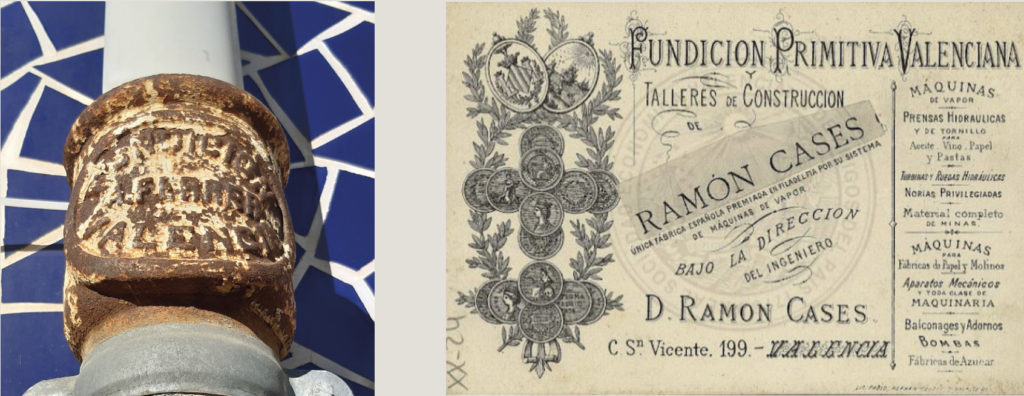
The Valencian metal industry grew from the mid-nineteenth century and foundries (Ferrer or La Primitiva Valenciana, as examples) were still installed within the city, since it mainly supplied the local market. There was such a varied demand, not only applied to architecture but also to industry and agriculture, that many foreign artisans set up their workshops in Valencia.
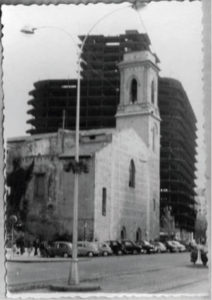
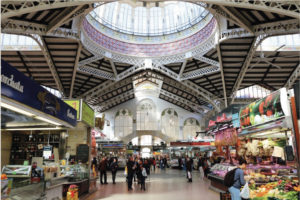
2. PRODUCTION / CHARACTERISTICS
If we focus on the decorative elements produced with casting, in homes, we can see different uses of metal present even in the same façade:
+ Balcony railings, very careful for the social importance of this element in the houses, since they serve as a connection between the public and private spheres.
+ Cobblestones, at the top of the windows. It fulfills two functions: to protect the Venetian blind from inclement weather while hiding it in an aesthetic way. Valencia stands out as the Spanish city with the largest quantity and variety of this element and the second in Europe, after Lyon.
+ The “faces of water”, which are popularly interpreted as an element of protection of the house and its inhabitants. We can find them in gutters, drains and downspouts. There are faces of children, women, bearded lords and even mythological beings.
+ The grilles on doors and windows that, on the one hand, respond to a need for separation and security of private space from the street, especially on the ground floor. On the other hand, in these elements functionality is combined with aesthetics by modeling plant or geometric shapes in detail.
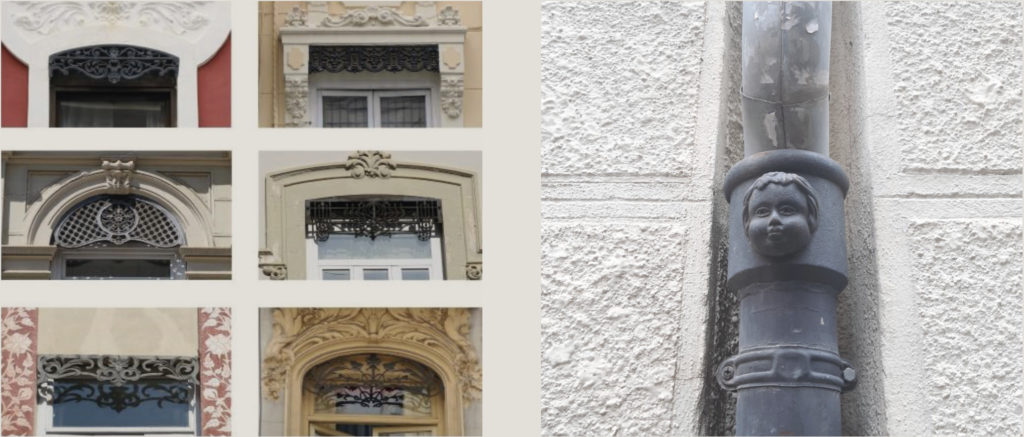
3. EXAMPLES OF THE CABANYAL
The faces of C/ Josep Benlliure
Walking along this street, with great attention, we can find several “faces of the water”. With the faces of a woman and a man, with and without beards, they look from the gutters in search of any danger that might affect the house they are guarding. Or so it’s called.
We can also discover traces of the producers of the drains that run along the facades: the Ferrer foundry, one of the most important in Valencia in the early twentieth century.
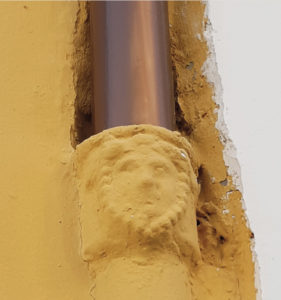
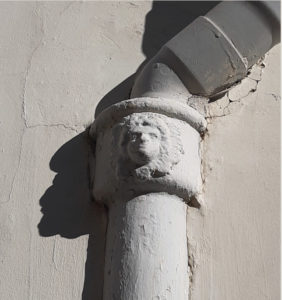
C/Barraca 116, 141, 147, 149, 151…
The lambrequins find a very prominent place, both in quantity and variety, in Calle Barraca. The iron ones look like die-cut templates, almost always with plant, organic or geometric motifs, and used to match the design of the balcony. At first, they were a symbol of the economic power of the owners, since producing them from iron was more expensive than making them from wood or plaster. But, over time, foundry work became cheaper, probably due to serial and catalogue work and the number of workshops present in Valencia.
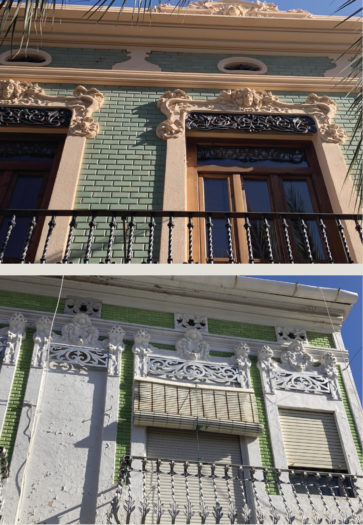
El Casinet (Josep Benlliure Street, 272)
Built in 1909, it is the popular name by which the building of the Societat Musical Unió de Pescadors is known. It was relevant in the Valencian political panorama since, from its balconies, Blasco Ibáñez gave more than one speech. The railings are made of iron, with modernist plant motifs, and are combined with the grilles of the windows on the ground floor. The balcony became a space for socio-political projection instead of another decorative and functional element of the building.
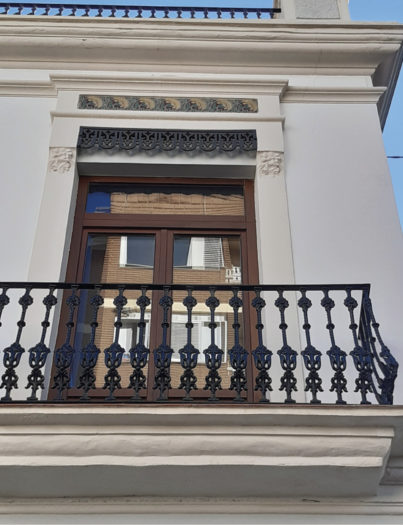
Text 2